Meet Kid Captain Bentley Erickson
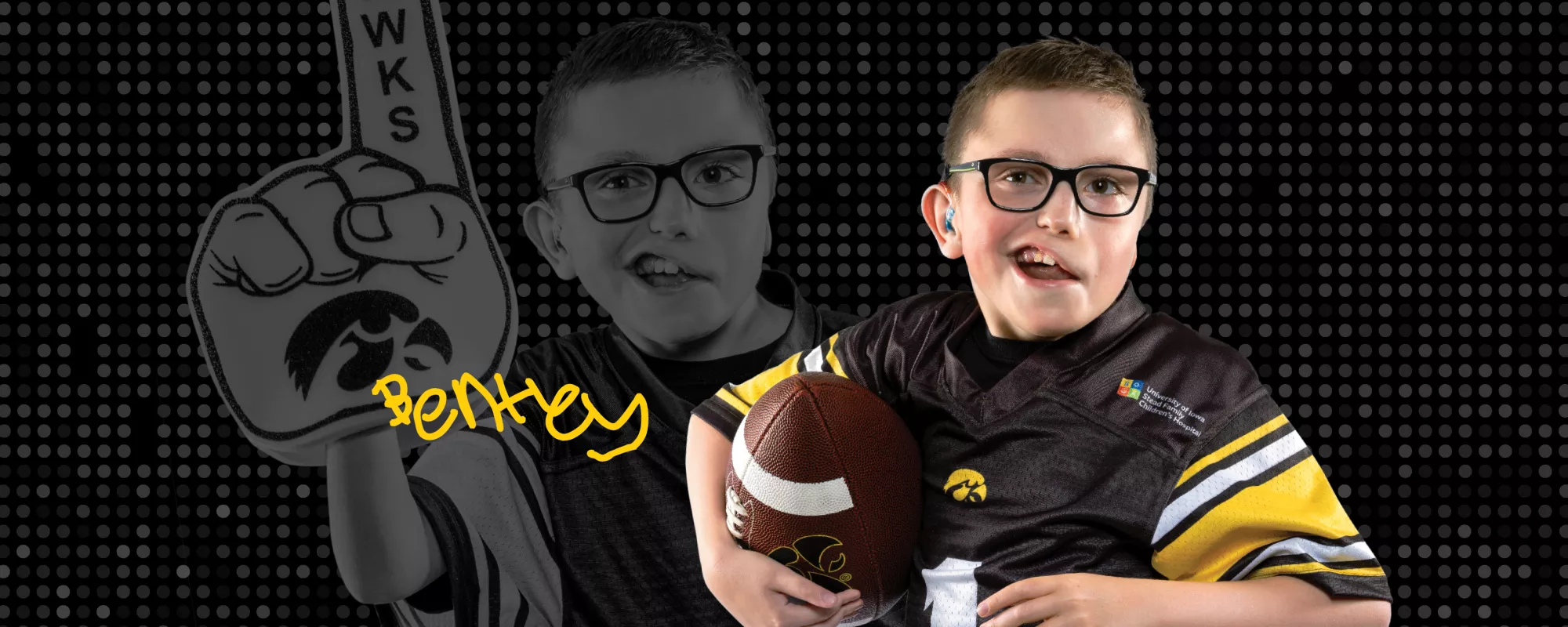
The family of Bentley Erickson takes pride in his strength and determination, tested after years in and out of the hospital and nearly two dozen surgeries.
Bentley was transferred to University of Iowa Stead Family Children's Hospital just days after he was born early at 31 weeks. Diagnosed with several rare and serious disorders, his parents emphasize that none of his conditions define the Minnesota boy.
“We were told before he was born that he had a hole in his heart, a mass in his lung, and some heart defects that may need heart surgery,” his mother, Kris, recalls. “After he was born, everything we found was much different.”
A multitude of issues
Bentley’s left ear was missing, among disorders including esophageal atresia, in which the upper and lower esophagus do not connect, and tracheoesophageal fistula, an abnormal connection between the esophagus and trachea that prevents milk or food from getting to the stomach.
He also had Goldenhar syndrome, a rare disorder that affects development of the face and skull, and VACTERL association, a group of conditions affecting the following:
-
Vertebrae
-
Anus
-
Cardiac system
-
Trachea
-
Esophagus
-
Renal system (kidneys)
-
Limbs
In addition, Bentley was diagnosed with chronic lung disease and hydrocephalus with a chiari malformation, in which brain tissue extends into the spinal canal. Bentley was born by emergency C-section after his umbilical cord was wrapped around his neck which was unrelated to his health conditions.
“The doctor came in and said, ‘I want you to advocate for your son and ask for a transfer to the University of Iowa,’” Kris says.
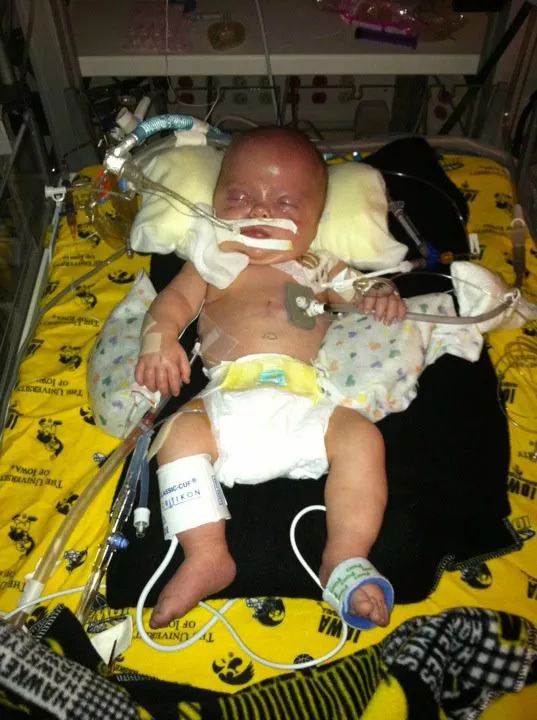
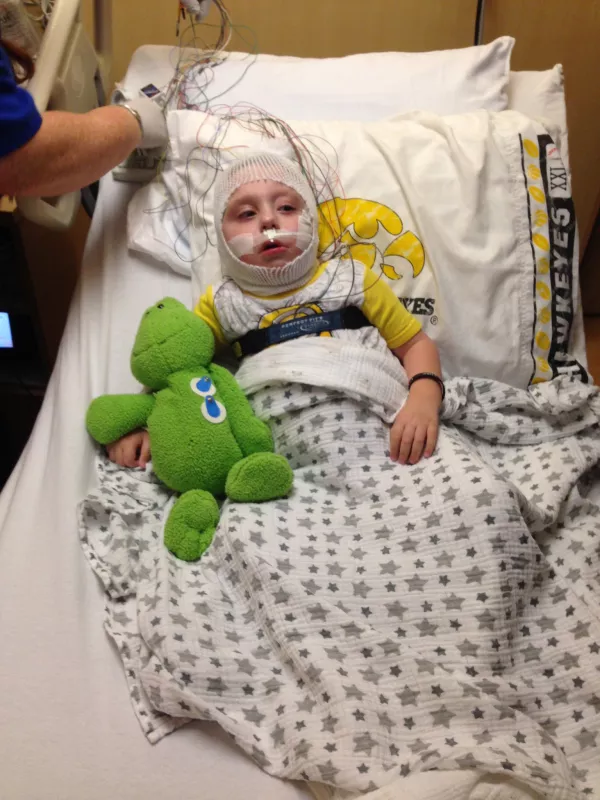
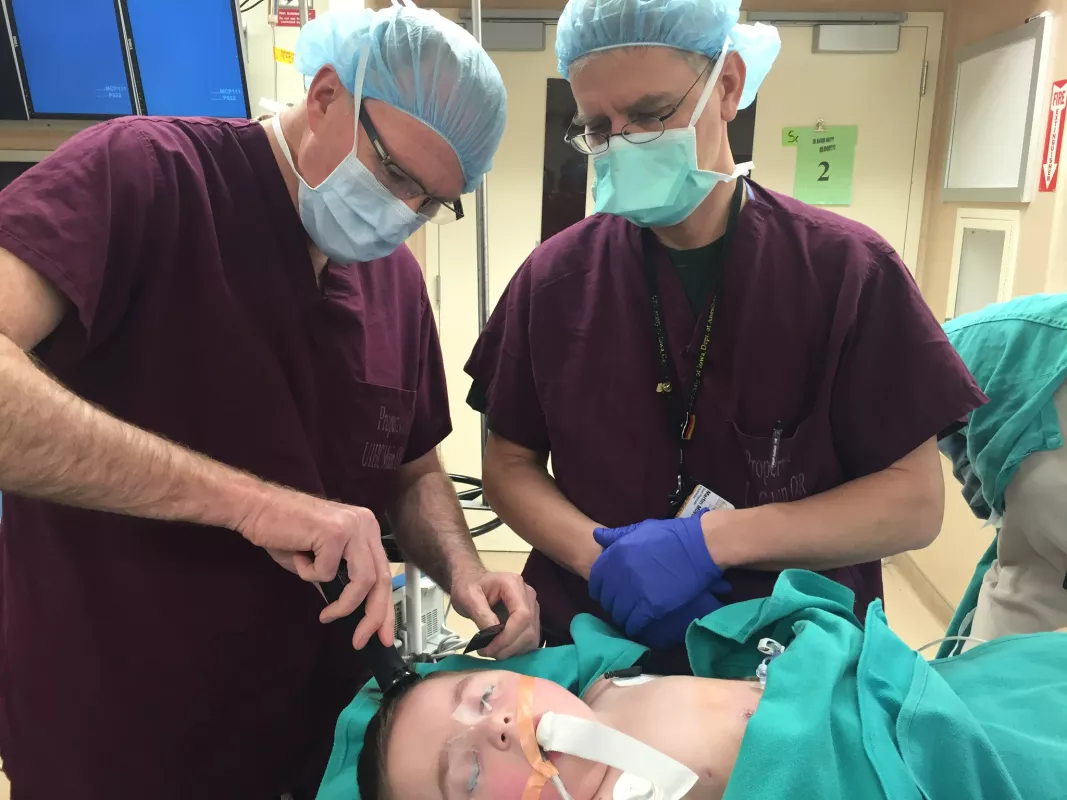
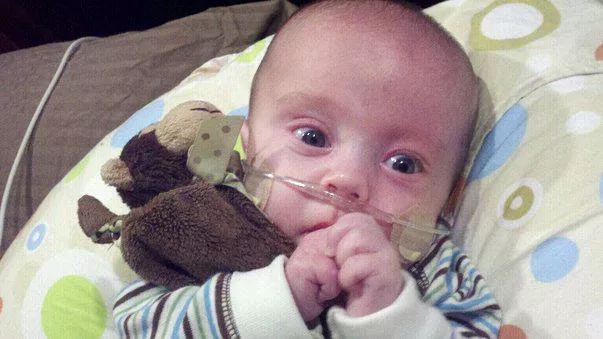
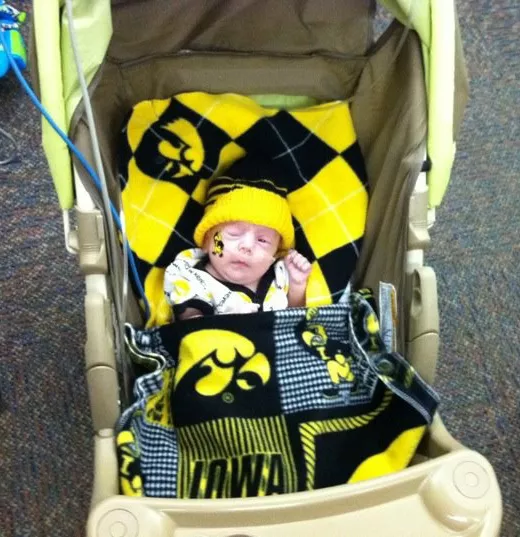
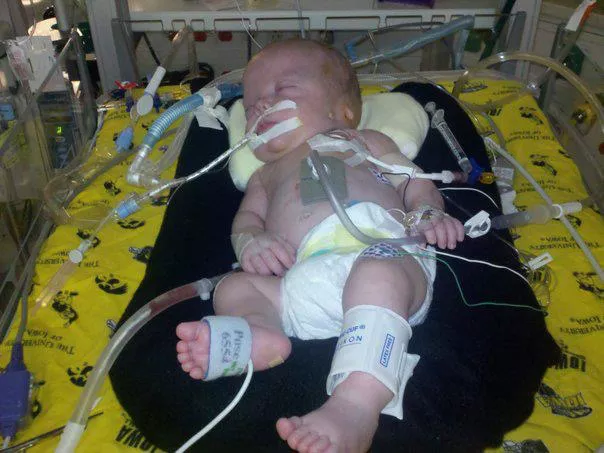
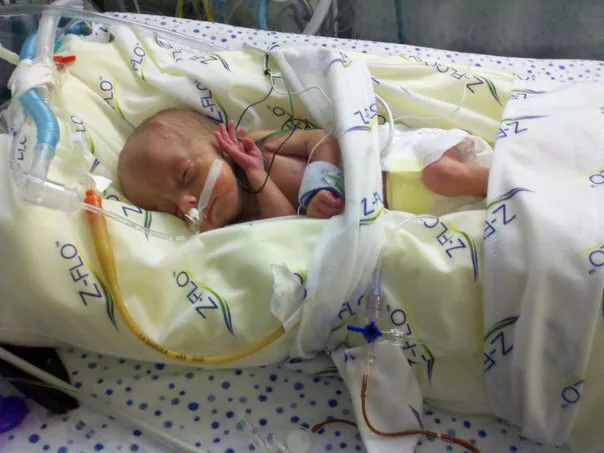
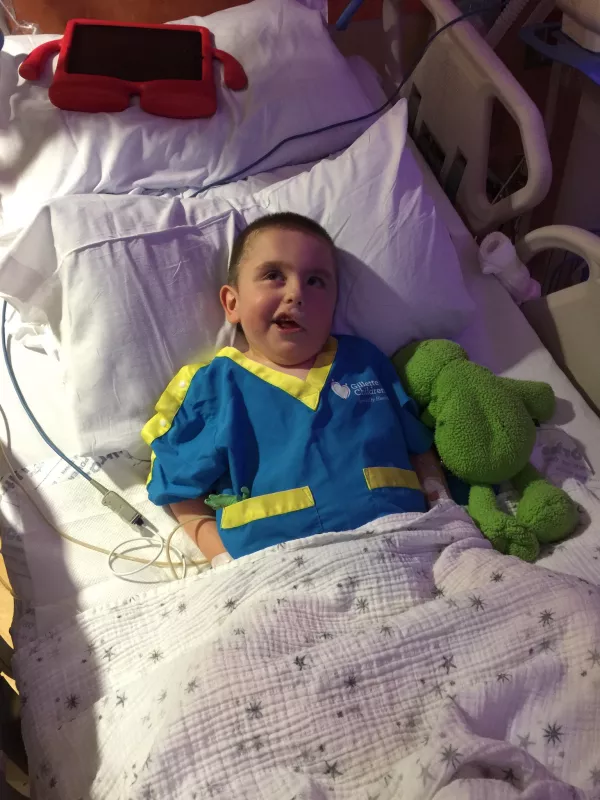
Bentley was transferred at just 5 days old via ambulance.
Bentley spent four months in the neonatal intensive care unit at UI Stead Family Children’s Hospital, and then much of the first four years of his life in and out of the hospital, with Kris and her husband, Nathan, taking turns with Bentley and their children at home.
During that time, Bentley had the first 10 of 20 surgeries. The team was committed to keeping Bentley’s own esophagus, believing it would lead to better outcomes and an improved quality of life. Pediatric surgeon Graeme Pitcher, MBBCh, was part of that team.
Pitcher says their priority was to take care of his esophageal atresia. The abnormal connection between Bentley esophagus and trachea increased the risk of contaminating his lungs. In most cases the esophagus is repaired as a one-step procedure, but in Bentley’s rare case, there was a long gap that made it impossible to join the upper and lower portions of his esophagus with just one procedure. The team took a staged approach instead, repairing the area where the lower portion of his esophagus connected to trachea. Then, 10 weeks later, the team used an innovative second operation, where they moved the lower portion of his esophagus through a space in the chest called the thoracic inlet, they were able to join up the two parts of his esophagus in his neck.
“Dr. Pitcher and Dr. Martin Mueller are like this team of angels who walk through the hallway and are truly life-saving people who go out of their way,” Kris says. “They were like the golden team.”
When they asked if there was anything else they could do for the family, Bentley’s parents jokingly asked if they could give the youngster a haircut when he was under anesthesia, because he was “absolutely terrified” of getting a haircut.
“It was so traumatizing for him, I didn’t know what else to do,” Kris recalls, adding that the doctors gave him the haircut and even took a selfie with him. “They gave him a beautiful haircut, because they’re saints.”
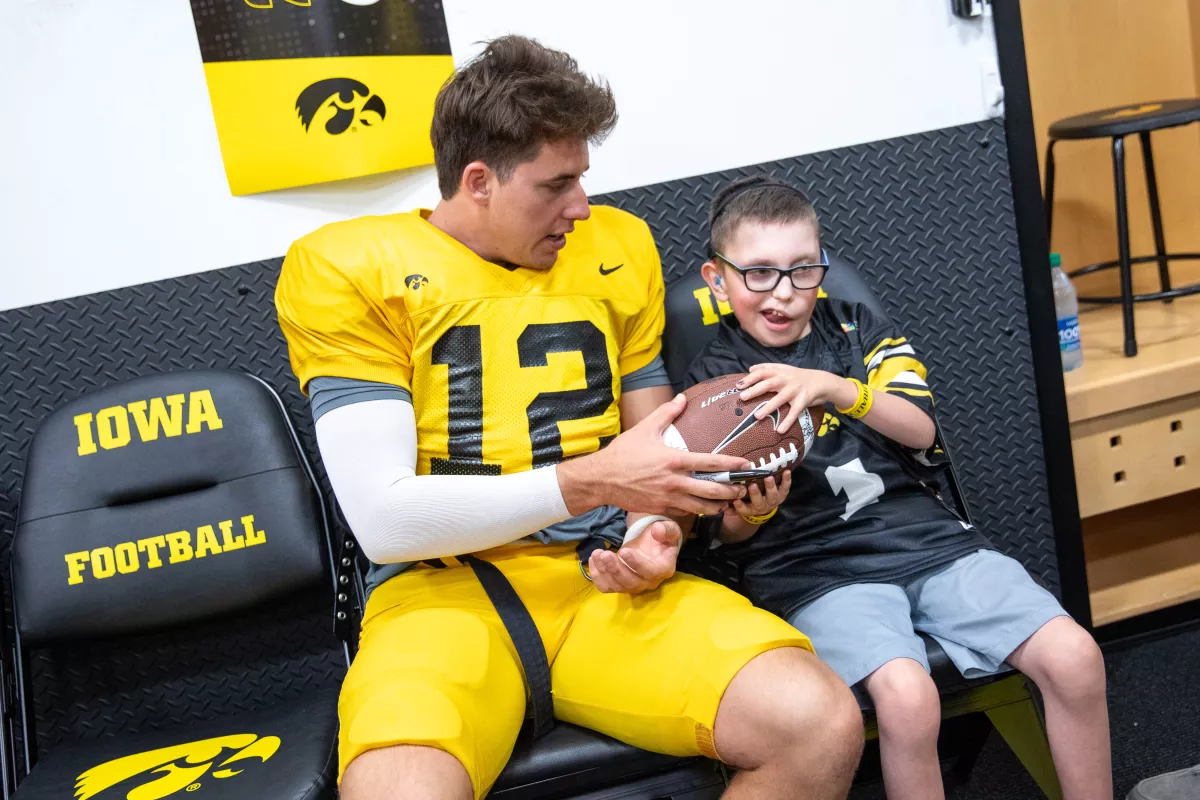
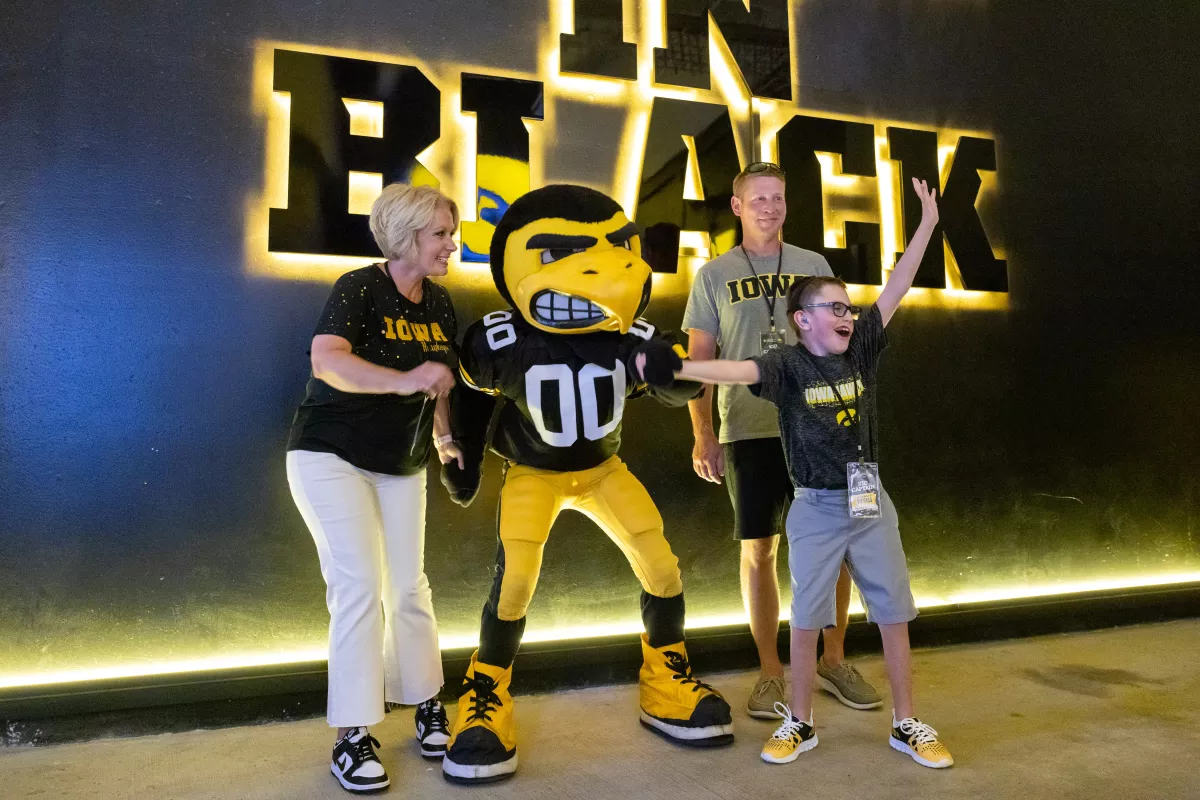
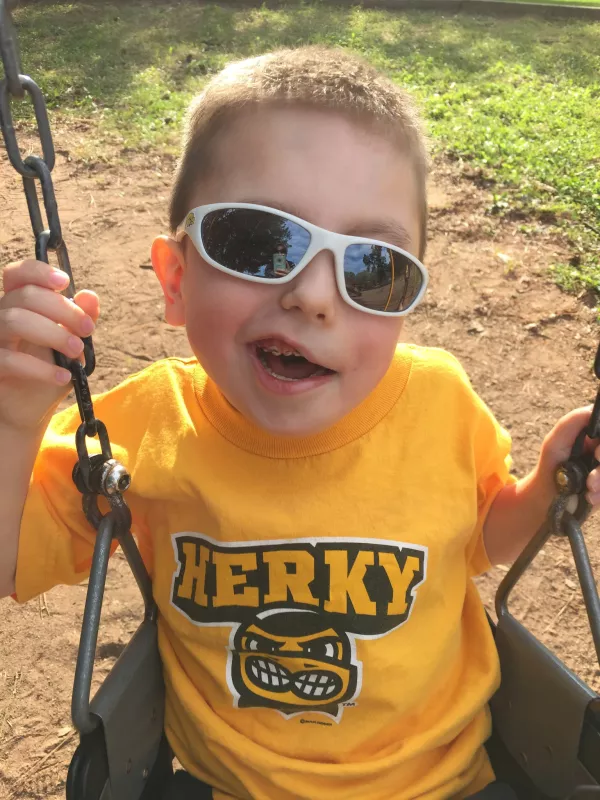


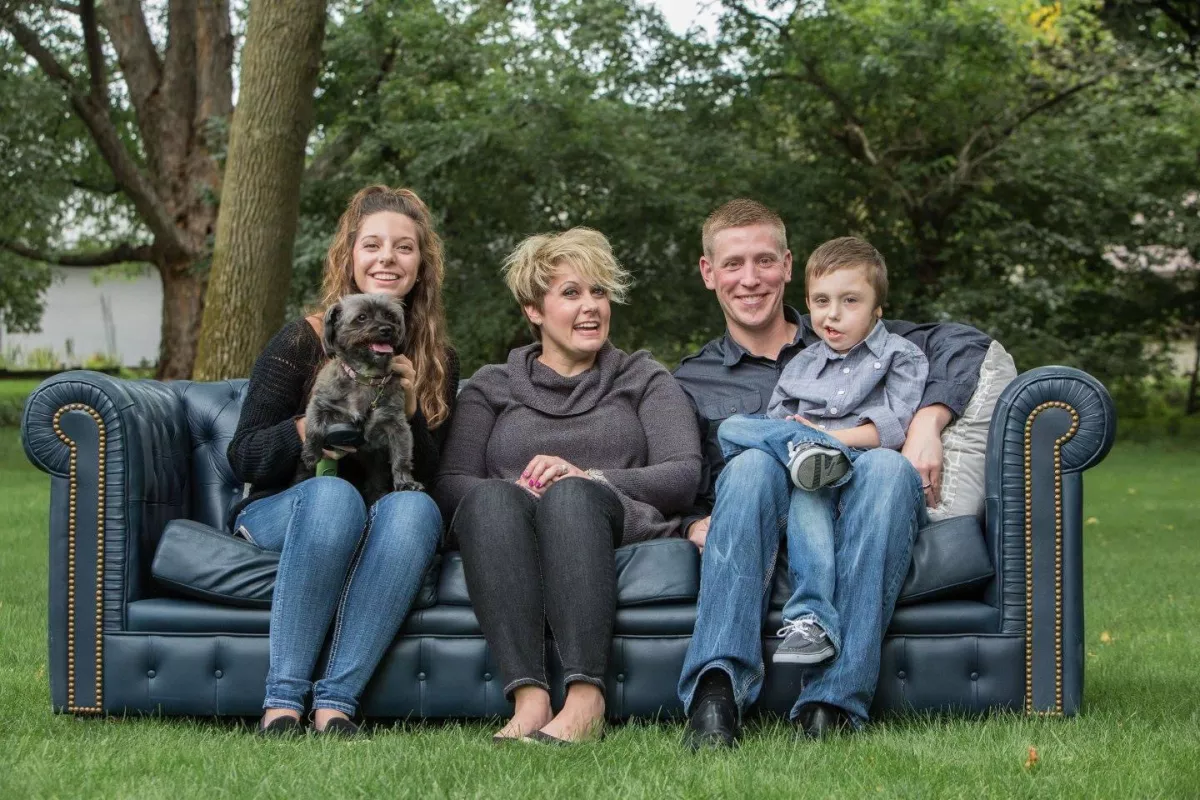
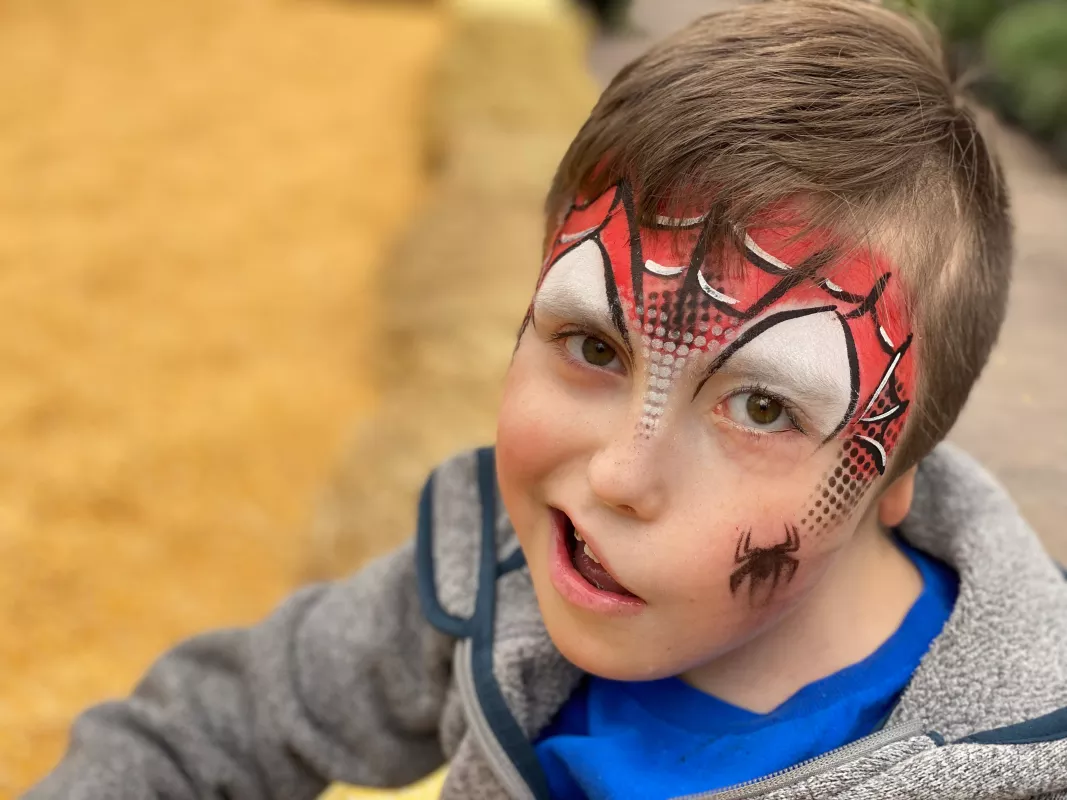
'Beyond all expectations’
Now 12, Bentley is in sixth grade, loves riding on the pontoon boat and playing Xbox with two controllers at the same time.
His mother says he’s obsessed with traffic lights so much so that during the pandemic, they emailed the Minnesota Department of Transportation “to thank them for traffic lights” and were invited to the traffic light warehouse in Minnesota to learn how they work. They now have a 7 1/2-foot-tall traffic light in their basement.
“Wherever he goes, he just lights up the world,” Kris says. “He loves Hawkeye football. He lives for Hawkeye football and has this incredible talent for predicting who is going to win.” Bentley often wears a George Kittle shirt and his prized possession is a video message the former Hawkeye football player-turned-NFL star sent Bentley on his birthday.
The family stays in contact with Bentley’s care team in Iowa, remembering the care they provided at UI Stead Family Children’s Hospital.
“I can’t tell you how many times we have cried, we have prayed, we have begged just for him to survive,” she continues. “Everyone went way above and beyond all expectations. They all held our hands. They all prayed with us. They all did everything they possibly could for him to survive. They performed miracles. It’s not just care in those walls. There are true miracles happening there.”
Patient Stories

